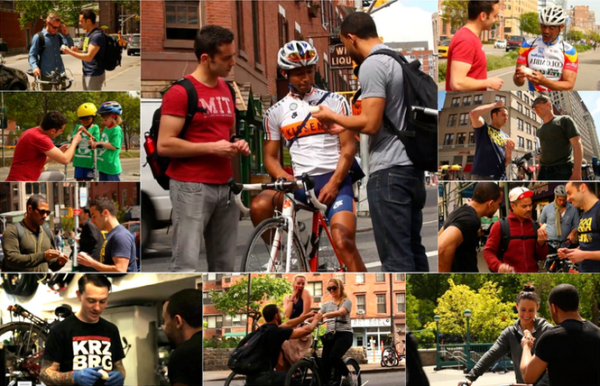
I bet you have a really great bike product idea. Cleaner gear shifting, better pedals, lighter shocks, glow-in-the-dark tires, tastier supplements, smart-phone performance tracking. You watched countless Shark Tank episodes and Kickstarter videos and thought, “Hey, I can do this.”
When we launched Fortified Bicycle in 2012 we had lots of ideas, too. Like most ideas, ours were borne out of a problem. In our case the problem was bicycle gear wasn’t designed for urban cyclists. Our first bike light product came after a friend had his light stolen. Riding home that night he was hit by a driver who couldn’t see him. So we made the world’s first anti-theft bike light and it got our company off the ground.
Everyone told us not to do it, and they had genuinely good and persuasive reasons: the bicycle industry is really tough; making products in the U.S. is too expensive but if you make it overseas the Chinese will copy you; and so on. Our favorite came from an industry veteran: “How do you make a million dollars in the bike industry? Start with $10 million.”
Well, we did it anyway. And because we’re teachers at heart, we’ve shared our battle-learned lessons during guest lectures at MIT and Boston University, and in past articles. Now, we’re teaming up with Bikerumor to bring these lessons to future bike entrepreneurs in a new series. Let’s get started…
Lesson #1 – Turn your pain into your idea
Many of the best products are borne out of frustration with the status quo. The advent of mountain biking is the classic example, as described in MIT Professor Eric Von Hippel’s book Democratizing Innovation: “In the early 1970s … some young cyclists started to use their bicycles off-road. Existing commercial bikes were not suited to this type of rough use, so early users put together their own bikes. They used strong bike frames, balloon tires, and powerful drum brakes designed for motorcycles. They called their creations ‘clunkers.’” In fact, von Hippel’s studies show that “82% of novel function innovations are developed by users.”
What does this mean to you? Simple: big companies aren’t usually the ones coming up with the best innovations. Small, independent entrepreneurs like you and I are. In Fortified’s case we found pain around bike light theft. Find your bicycling pain, then figure out how to eliminate that pain, and your idea will be born.
Lesson #2 – Find out if others share your pain
You found your pain, have a solution, and now it’s time to see if others share that pain. Many entrepreneurs skip this step and say, “I bike every day, I am the market and I know what the market needs.” Steve Blank talks about this in his book on customer research, The Four Steps To the Epiphany. Blank writes, “an intelligent opinion is still a guess and the dumbest person with a fact trumps anyone with an opinion. There are no facts inside the building so get the heck outside.”
Another common misstep is thinking “I did my market research online and found a compelling study.” Market research is a full-contact sport. Don’t hide behind a computer screen. Go outside and talk to customers.

Lesson #3 – Start qualitative, then go quantitative
Mark Ritson, our favorite MIT marketing professor drilled this idea into our heads: “It takes courage to talk to customers but you have to do it.” Ritson reminded us, “First the qualitative, then the quantitative.” Interview customers (qualitative) before you create surveys (quantitative).
Once we spoke with hundreds of customers we honed in on what questions to ask in a survey. We carefully crafted an eight-question survey with the precision of a neural surgeon. The data was worth it’s weight in gold: we learned that one in three city cyclists have had their lights stolen and 84% reported they unclip and forget their bike lights at work.
This data gave us the confidence to start investing real time and small money. We learned about hacking together prototypes on a shoestring – a topic we’ll cover in our next post, followed by more tips and lessons to help you get your own idea off to a great start. In the meantime, please give us feedback. What topics should we cover in this “how to start a bike company series?”